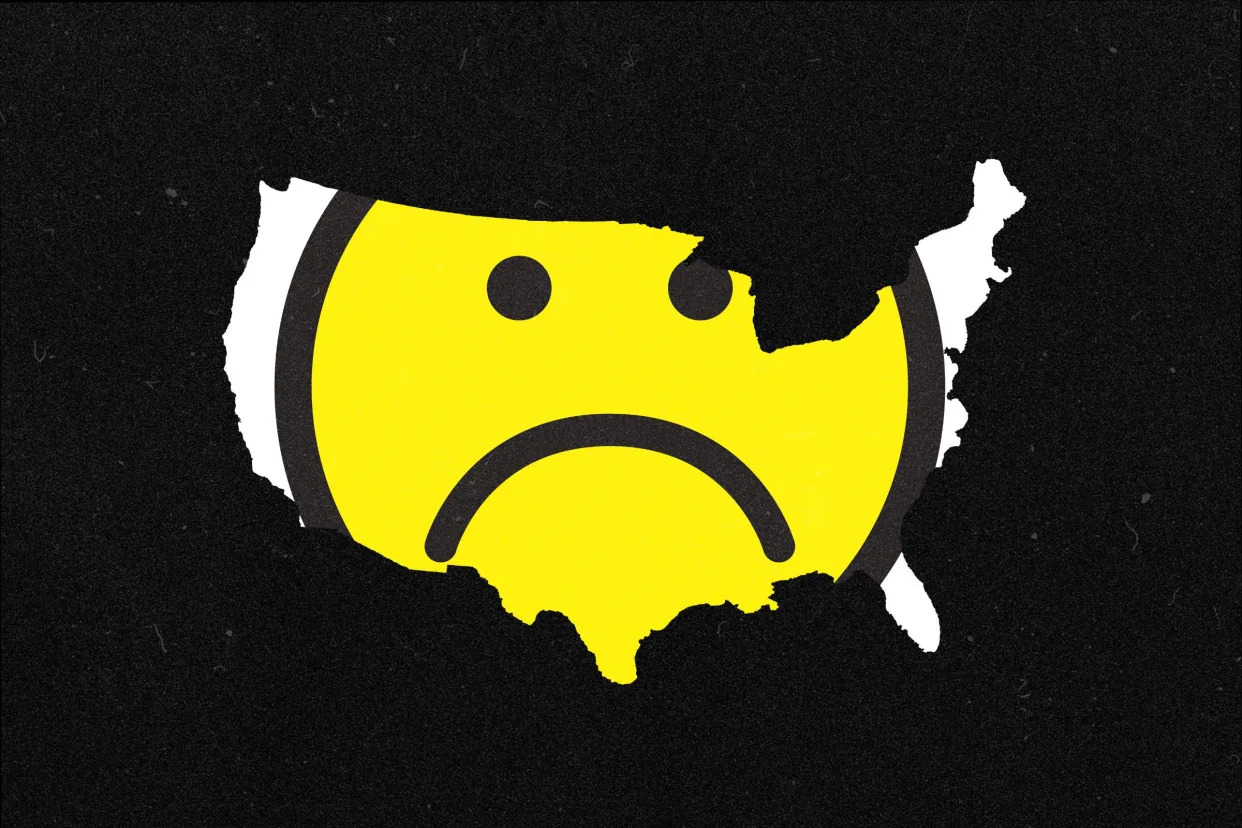Time
U.S. Falls Out of Top 20 Happiest Countries for the First Time Ever
Solcyré Burga – March 19, 2024

Credit – Illustration by TIME; Getty Images (2)
For the first time in the World Happiness Report’s dozen-year history, the U.S. did not rank in the top 20 of the world’s happiest countries.
Out of the more than 140 nations surveyed, the U.S. landed in 23rd place, compared to 15th place in 2023. While the U.S. is still in the top 10 happiest countries for those 60 years old and above, its overall ranking fell due to a significant decline in the reported well-being of Americans under 30.
Finland ranked at the top of the list for the seventh year in a row. Lithuania is the happiest country in the world if you only look at those under the age of 30, while Denmark is the happiest country for people who are 60 and older.
This was the first year the report, released March 20 to mark the UN’s International Day of Happiness, analyzed rates of happiness by age group. “We found some pretty striking results,” said John F. Helliwell, professor at the Vancouver School of Economics and founding editor of the World Happiness Report. “There is a great variety among countries in the relative happiness of the younger, older, and in-between populations. Hence the global happiness rankings are quite different for the young and the old, to an extent that has changed a lot over the last dozen years.”
The findings were developed through a partnership between Gallup, the Oxford Wellbeing Research Centre, the World Happiness Report’s editorial board, and the United Nations’ Sustainable Development Solutions Network. Countries are ranked based on a “three-year average of each population’s average assessment of their quality of life,” the press release said.
The most recent report relies on data that was collected after the start of the COVID-19 pandemic, with survey respondents answering questions from 2021-2023.
According to the report, people born before 1965 are, on average, happier than people born after 1980. Millennials report drops in their life satisfaction with every year they grow older, while boomers’ happiness increases the older they get.
Globally, people between the ages of 15 and 24 typically report greater life satisfaction than older adults. But the 2024 report finds that the gap is shrinking in Europe, and has reversed in North America. The data contrasts with reports of life satisfaction between 2006 and 2010, when the younger generation in North America were just as happy as older folks.
“Social connections could be one factor explaining the generational happiness differences,” says Ilana Ron Levey, Gallup Managing Director. “Different generations have different levels of social connections and we know social support and loneliness affect happiness. The quality of interpersonal relationships may affect the young and the old differently.”
In Central and Eastern Europe, Ron Levey notes, younger people tended to report higher levels of happiness than older people, in part because of social connection. But the data differs elsewhere in the world, including in the U.S. Last May, the U.S. Surgeon General brought attention to the public health crisis of loneliness and isolation, calling it an epidemic. A previous report by the American Psychological Association found that Gen Z adults reported higher stress levels than older generations, with health and finances cited as top concerns.
Across the Middle East, North Africa and South Asia, the wellbeing of 15-to-24-year-olds has also fallen since 2019.
“Piecing together the available data on the wellbeing of children and adolescents around the world, we documented disconcerting drops especially in North America and Western Europe,” said Jan-Emmanuel De Neve, the director of Oxford’s Wellbeing Research Centre and an editor of the report. “To think that, in some parts of the world, children are already experiencing the equivalent of a mid-life crisis demands immediate policy action.”
